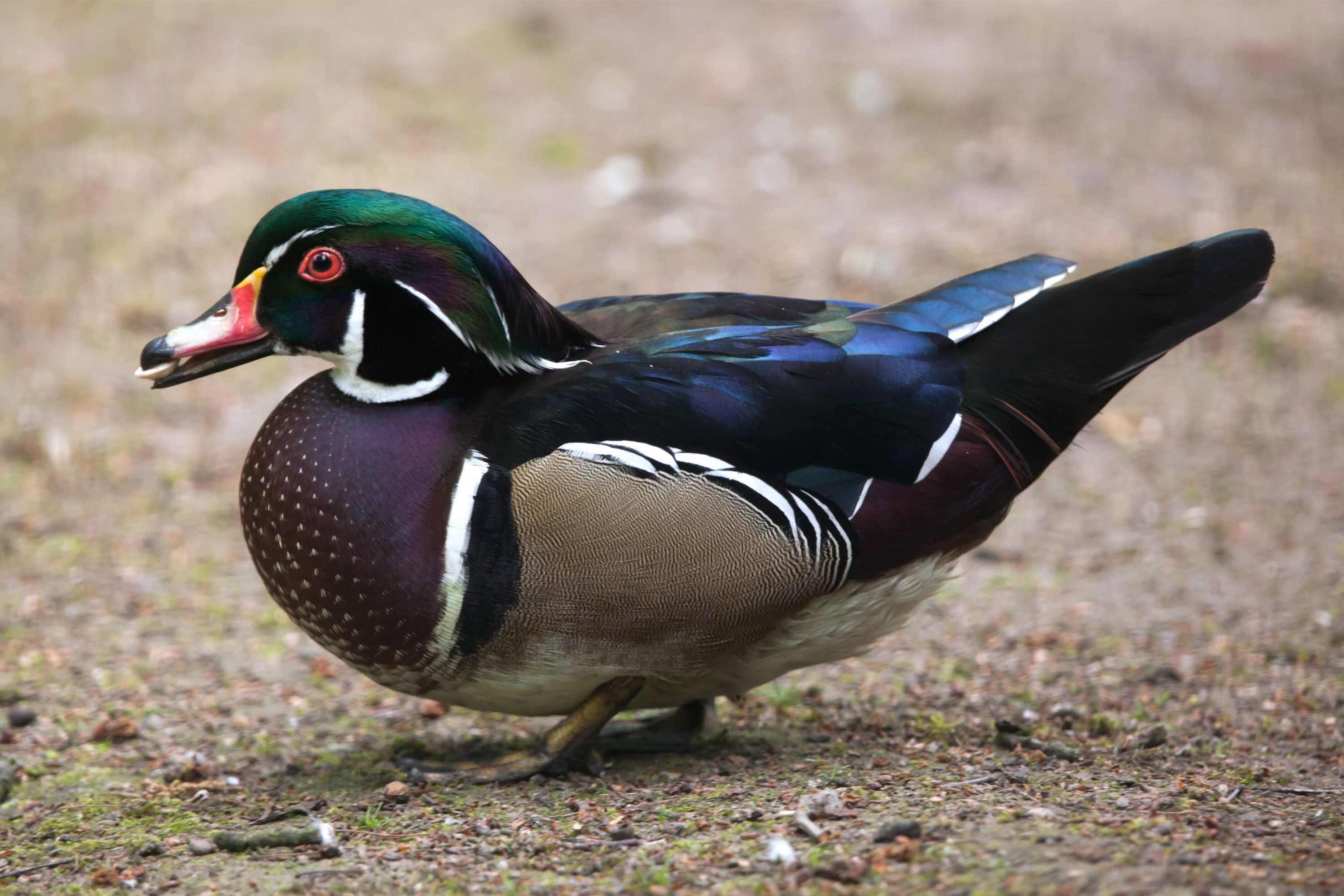Wood duck
(Aix sponsa)

Description
Aix sponsa, commonly known as the Wood Duck, is a species of waterfowl native to North America. These beautiful birds are known for their stunning plumage, unique nesting habits, and important ecological role in their habitats. In this article, we will explore the fascinating world of Aix sponsa and learn all about their biology, behavior, and conservation status. Taxonomy and Systematics The Wood Duck belongs to the family Anatidae, which includes ducks, geese, and swans. Within this family, Aix sponsa is classified under the subfamily Anatinae, which includes dabbling ducks like the Mallard and the Northern Pintail. The Wood Duck was first described by the renowned naturalist Carl Linnaeus in 1758. Since then, several subspecies of Aix sponsa have been recognized, although the taxonomy of the species is still subject to debate. The most widely accepted classification recognizes two subspecies: the nominate subspecies Aix sponsa sponsa, which is found in the eastern part of North America, and Aix sponsa diazi, which is found in Mexico and Central America. Physical Description The Wood Duck is one of the most colorful and strikingly patterned ducks in North America. Males and females have distinct plumage, with males being more vibrant and colorful. Adult males have iridescent green heads, white stripes on their cheeks, red eyes, and a distinct white throat patch. They also have a dark green and purple iridescent crest on their head, a brownish-red breast, and a multicolored body with iridescent blue, green, and purple feathers. Females, on the other hand, have a more subdued plumage, with a gray-brown head, a white eye-ring, and a distinctive white teardrop-shaped eye patch. They have a brownish-gray body with a mottled pattern, and a white belly. Wood Ducks are small to medium-sized ducks, with a length of 47-54 cm (18-21 in) and a wingspan of 66-73 cm (26-29 in). They weigh around 500-700 g (18-25 oz), with males being slightly larger and heavier than females. Habitat and Distribution Wood Ducks are found in a variety of wetland habitats, including wooded swamps, marshes, ponds, and lakes. They require trees for nesting and roosting, as well as open water for feeding and swimming. In the winter, they may also use flooded agricultural fields and other open habitats. The range of the Wood Duck covers most of North America, from southern Canada to the Gulf of Mexico. They breed in the eastern United States, southern Canada, and the western United States, while the non-breeding range extends further south to Mexico and Central America. Behavior and Ecology Wood Ducks are primarily diurnal, meaning they are active during the day. They are social birds and form pairs during the breeding season. Males perform elaborate courtship displays to attract females, including head-bobbing, wing-flapping, and whistling calls. Wood Ducks are cavity nesters, meaning they use natural or artificial tree cavities for nesting. They may also use nest boxes or hollowed-out trees. The female lays 7-15 eggs, which hatch after about 28 days. The ducklings are able to leave the nest within a day of hatching and are able to swim and feed themselves shortly thereafter. Wood Ducks are omnivores, meaning they eat a variety of plant and animal matter. Their diet includes aquatic plants, seeds, insects, snails, and small fish. They are also known to feed on acorns and other nuts. Conservation Status The conservation status of the Wood Duck is considered to be of least concern by the International Union for Conservation of Nature (IUCN). This is due to the species' large range, stable population trend, and lack of significant threats. However, the Wood Duck has faced declines in the past due to habitat loss and hunting pressures, and conservation efforts have been implemented to protect the species and its habitat. One of the key conservation efforts for the Wood Duck has been the establishment of nest box programs. The lack of suitable nesting sites has been identified as a limiting factor for Wood Duck populations, and the installation of nest boxes has been shown to increase breeding success. Many organizations, including state wildlife agencies and conservation groups, have implemented nest box programs to support Wood Duck populations. Hunting regulations have also been put in place to protect Wood Duck populations. In the early 20th century, Wood Ducks were heavily hunted for their beautiful plumage and meat, which led to significant population declines. Since then, hunting regulations have been put in place to limit the number of Wood Ducks that can be hunted and protect breeding populations. Overall, the Wood Duck is a species that has benefited from conservation efforts and continues to thrive in many parts of its range. However, continued monitoring and conservation efforts will be necessary to ensure that Wood Ducks and their habitats are protected for future generations.
Taxonomic tree:







